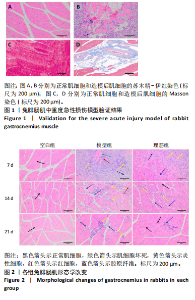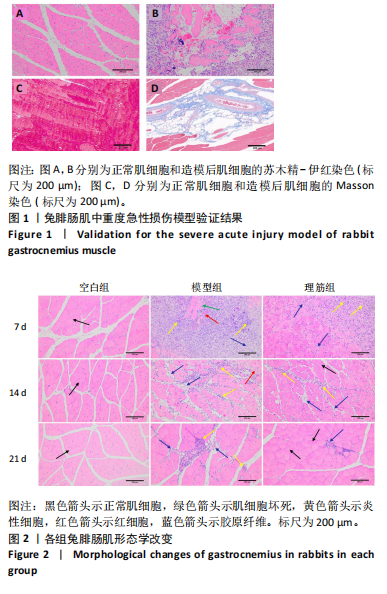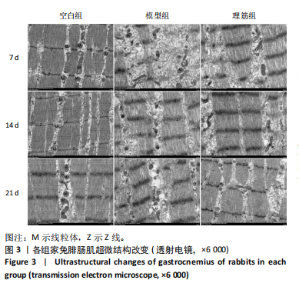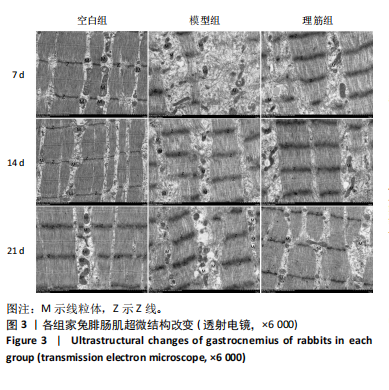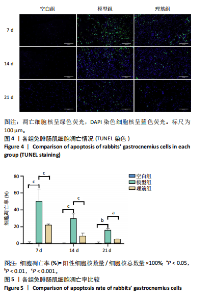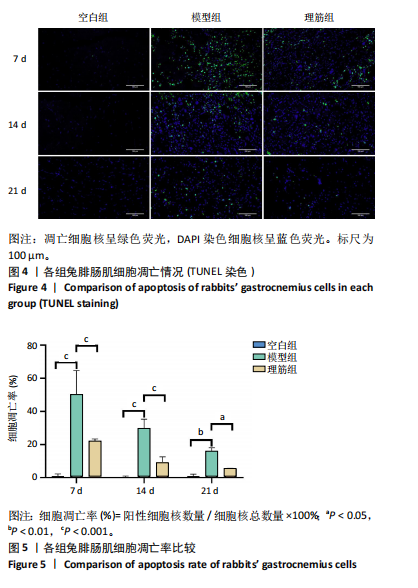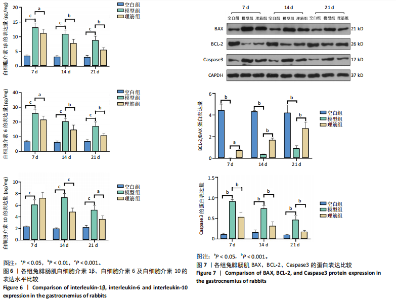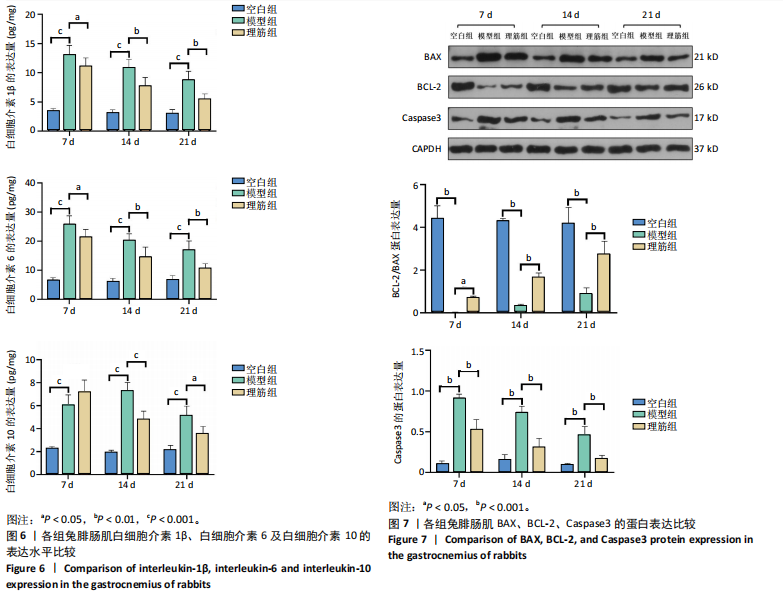[1] SANTANNA JPC, PEDRINELLI A, HERNANDEZ AJ, et al. Muscle Injury: Pathophysiology, Diagnosis, and Treatment. Rev Bras Ortop (Sao Paulo). 2022;57(1):1-13.
[2] 卢雅梦,雷静,尤浩军.骨骼肌损伤后疼痛机制及非药物治疗研究进展[J].中国疼痛医学杂志,2023,29(2):138-143.
[3] 卜婷婷,汪松.白藜芦醇在骨骼肌损伤修复中的研究进展[J].海南医学,2022,33(11):1451-1454.
[4] 王浩,刘海潮,陈少清,等.骨骼肌钝挫伤大鼠模型的构建与评价[J].中国康复医学杂志,2024,39(1):24-30.
[5] 杜田昊,刘佳,杨旭,等.骨骼肌损伤微波热疗机制的研究进展[J].中国矫形外科杂志,2023,31(23):2166-2171.
[6] 商蔚然,李华南,李进阳,等.近5年推拿修复骨骼肌损伤的作用机制研究进展[J].天津中医药,2024,41(7):939-944.
[7] 吴丽君,王佳怡,毕翔宇.虾青素通过mTOR-ULK1自噬通路对大鼠运动性骨骼肌损伤影响的研究[J].山东体育学院学报,2024, 40(3):114-126.
[8] LAHMANN I, GRIGER J, CHEN JS, et al. Met and Cxcr4 cooperate to protect skeletal muscle stem cells against inflammation-induced damage during regeneration. Elife. 2021;10:e57356.
[9] 陈强,何兰,王贤文.中药诱导鼻咽癌细胞凋亡机制的研究进展[J].疑难病杂志,2024,23(7):883-887.
[10] 王涵,厉洋洋,菅晓婷,等.CaMKⅣ信号缺失促进肌损伤炎症并影响肌再生[J].中国临床解剖学杂志,2023,41(6):692-697+703.
[11] BERTHELOOT D, LATZ E, FRANKLIN BS. Necroptosis, pyroptosis and apoptosis: an intricate game of cell death. Cell Mol Immunol. 2021; 18(5):1106-1121.
[12] 林建平,王浩,郭明玲,等.骨骼肌钝挫伤的损伤与修复机制研究进展[J].康复学报,2022,32(1):88-94.
[13] LEE YI, LEEM YH. Acid sphingomyelinase inhibition alleviates muscle damage in gastrocnemius after acute strenuous exercise. J Exerc Nutrition Biochem. 2019;23(2):1-6.
[14] 周一甫,徐通,于峰,等.针刺结合理筋手法治疗神经根型颈椎病临床研究[J].光明中医,2023,38(14):2784-2787.
[15] 杨平,马惠昇,穆静,等.回医理筋疗法治疗腰椎间盘突出症的临床疗效[J].宁夏医科大学学报,2016,38(3):233-235.
[16] 刘志华.回医理筋手法对家兔骨骼肌损伤修复过程中IGF-1表达的影响[D].银川:宁夏医科大学,2014.
[17] 李开颖,魏晓歌,宋斐,等.理筋手法调控兔骨骼肌损伤修复中瘢痕形成的作用机制[J].中国组织工程研究,2025,29(8):1600-1608.
[18] 李开颖,魏晓歌,赵振宁,等.理筋手法减轻兔损伤骨骼肌纤维化的作用机制[J].中国组织工程研究,2025,29(14):2914-2921.
[19] 黄敬伟.经筋疗法[M].北京:中国中医药出版社,2010:77-85.
[20] 曾春华,曹征,曾宪斌.谈瘀血证的病因及治法[J].江西中医药, 2004,2(35):16-17.
[21] 王均宁.血瘀的致病特点及其证候特征浅析[J].中医药学刊,2003, 21(8):1299-1300.
[22] 杨露寒.“损伤血瘀证”大鼠骨骼肌细胞凋亡和坏死性凋亡的关系及机制的研究[D].成都:成都中医药大学,2018.
[23] 马惠昇,穆静.回医理筋-肩部筋伤[M].北京:中国中医药出版社,2016.
[24] NEPAL D, GAZELEY D. Role of IL-6 and IL-6 targeted therapy in systemic lupus erythematosus. Rheumatology (Oxford). 2023;62(12):3804-3810.
[25] MESSER JS. The cellular autophagy/apoptosis checkpoint during inflammation. Cell Mol Life Sci. 2017;74(7):1281-1296.
[26] EMAMI FARD N, XIAO M, SEHMI R. Regulatory ILC2-Role of IL-10 Producing ILC2 in Asthma. Cells. 2023;12(21):2556.
[27] 薛惠天,王兰兰,孙梦龙,等. 推拿手法对骨骼肌损伤修复炎性因子的影响综述[J]. 亚太传统医药,2023,19(4):247-251.
[28] 王万智.损伤血瘀证大鼠骨骼肌细胞凋亡、免疫机制研究[D].成都:成都中医药大学,2011.
[29] TAM BT, YU AP, TAM EW, et al. Ablation of Bax and Bak protects skeletal muscle against pressure-induced injury. Sci Rep. 2018;8(1):3689.
[30] MIN K, LAWAN A, BENNETT AM. Loss of MKP-5 promotes myofiber survival by activating STAT3/Bcl-2 signaling during regenerative myogenesis. Skelet Muscle. 2017;7(1):21.
[31] GREEN DR. Caspases and Their Substrates. Cold Spring Harb Perspect Biol. 2022;14(3):a041012.
[32] ZHANG QX, ZHANG LJ, ZHAO N, et al. FNDC5/Irisin protects neurons through Caspase3 and Bax pathways. Cell Biochem Funct. 2024;42(1): e3912.
[33] YU Y, ZHANG Y, ZHANG J, et al. Cantharidin-induced acute hepatotoxicity: the role of TNF-α, IKK-α, Bcl-2, Bax and caspase3. J Appl Toxicol. 2020;40(11):1526-1533.
[34] 王记委,李雁冰,李娜,等.针刺治疗通过抑制细胞凋亡改善缺血性脑卒中疗效及其机制[J].中国老年学杂志,2024,44(7):1773-1777.
[35] VASILIKOS L, SPILGIES LM, KNOP J, et al. Regulating the balance between necroptosis, apoptosis and inflammation by inhibitors of apoptosis proteins. Immunol Cell Biol. 2017;95(2):160-165.
[36] ABDANIPOUR A, DADKHAH M, ALIPOUR M, et al. Effect of Ghrelin on Caspase 3 and Bcl2 Gene Expression in H2O2 Treated Rat’s Bone Marrow Stromal Cells. Adv Pharm Bull. 2018;8(3):429-435.
[37] YUAN Z, DEWSON G, CZABOTAR PE, et al. VDAC2 and the BCL-2 family of proteins. Biochem Soc Trans. 2021;49(6):2787-2795.
[38] LI YN, NING N, SONG L, et al. Derivatives of Deoxypodophyllotoxin Induce Apoptosis through Bcl-2/Bax Proteins Expression. Anticancer Agents Med Chem. 2021;21(5):611-620.
[39] LIU F, JIANG YJ, ZHAO HJ, et al. Electroacupuncture ameliorates cognitive impairment and regulates the expression of apoptosis-related genes Bcl-2 and Bax in rats with cerebral ischaemia-reperfusion injury. Acupunct Med. 2015;33(6):478-484. |
